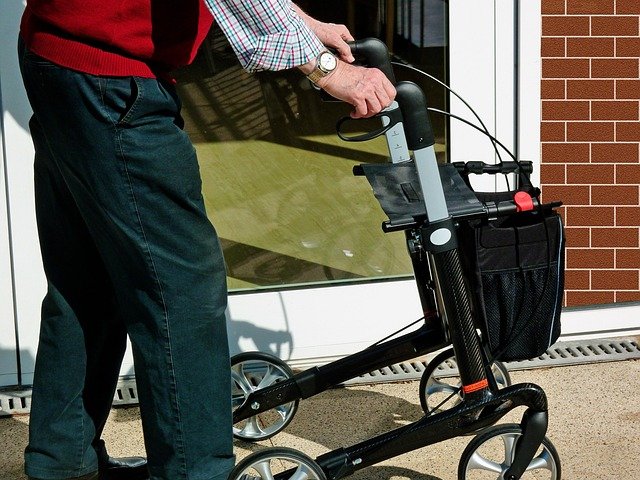DIY versus professional installation for shower seating safety
Deciding between installing a shower seat yourself or hiring a professional can affect daily routines, safety, and long-term upkeep. This article compares the practical factors that matter for accessibility, mobility, and hygiene so you can weigh stability and ergonomics alongside installation and maintenance needs.

A safe shower seat can improve independence and reduce fall risk, but the decision to install it yourself or hire a professional should be based on several practical factors. Considerations include the structural strength of walls and floors, the specific mobility and accessibility needs of the user, and the durability and nonslip characteristics of the chosen seat. Installation methods vary—from suction-seat and freestanding options to wall-mounted or fold-down models that require secure fixings—so understanding the differences helps match the right product to both the bathroom layout and the person who will use it.
This article is for informational purposes only and should not be considered medical advice. Please consult a qualified healthcare professional for personalized guidance and treatment.
How does accessibility affect installation choices?
Accessibility dictates how and where a shower seat should be positioned. For users with limited reach or unsteady balance, a seat placed within easy access to grab bars and the shower controls is crucial. DIY installs can work for lightweight or clamp-style seats in tiled, stable showers, but rooms with complex layouts, built-in benches, or low-height entryways may need customized placement best handled by a professional who understands local services and building practices. Accessibility also ties into hygiene planning—proper placement reduces splashing and places the seat where cleaning and ventilation are easier.
What mobility and independence concerns should guide setup?
Mobility limitations and the desire for independence influence whether a simple DIY solution suffices. Someone who transfers from a wheelchair or requires assistance during bathing may need a professional to ensure correct height, clearance, and compatibility with transfer aids. For users who mostly bathe unassisted, adjustable freestanding seats with nonslip feet can be appropriate and installation is often straightforward. Evaluate how the seat supports daily routines: adjustable features and ergonomics that allow independent transfers promote confidence and reduce caregiver burden.
How do safety, stability, and nonslip features compare?
Safety and stability are primary when choosing installation method. Wall-mounted seats and fold-down benches typically offer strong stability when anchored into studs or reinforced backing—situations where professional installation reduces risk. Nonslip surfaces and rubberized footings on freestanding models improve traction but depend on correct placement and routine maintenance. DIY installers should verify weight ratings and test the seat thoroughly before regular use; when uncertainty exists about wall integrity or load-bearing capacity, a professional assessment limits the chance of failure.
What ergonomics and adjustability matter for users?
Ergonomics affect comfort and functional use: seat height, width, backrest angle, and armrests all influence transfer safety and posture. Adjustable seats allow fine-tuning for evolving mobility needs, and proper adjustability often requires careful measurement and sometimes minor carpentry or anchoring, which can tip the balance toward professional installation. Professionals can also recommend or install complementary elements—grab bars and transfer benches—that integrate with the seat to create an ergonomic bathing environment that supports long-term independence.
How to handle maintenance, hygiene, and durability?
Maintenance and hygiene are ongoing concerns. Materials that resist mold and bacteria, ease of cleaning, and corrosion-resistant fasteners contribute to durability. DIY installations must follow manufacturer guidelines for sealants and periodic tightening of fasteners; failure to do so can reduce lifespan and compromise safety. Professionals can apply appropriate sealants, ensure drainage is unobstructed, and advise on maintenance schedules to maintain nonslip properties and structural integrity over time, which may save on future repairs or replacements.
Choosing between DIY and professional installation options
Choose DIY when the shower structure is sound, the seat is designed for tool-free or minimal assembly, and the user’s mobility needs are stable and modest. Opt for professional installation when wall reinforcement, precise anchoring, electrical or plumbing modifications, or customized placement are required. Professionals bring experience in assessing stability and durability, and they can align ergonomics and adjustability to the individual user’s profile. Both routes demand attention to safety standards and follow-up maintenance checks to ensure continued reliability.
Conclusion Weighing DIY versus professional installation for shower seating safety involves balancing accessibility, mobility, safety, stability, ergonomics, adjustability, installation complexity, maintenance, nonslip features, durability, independence, and hygiene. For straightforward setups in structurally sound bathrooms, careful DIY work can be effective; for complex conditions or when structural integrity is uncertain, professional services help ensure a safer, longer-lasting solution. Regular inspection and proper cleaning remain essential regardless of who installs the seat.





